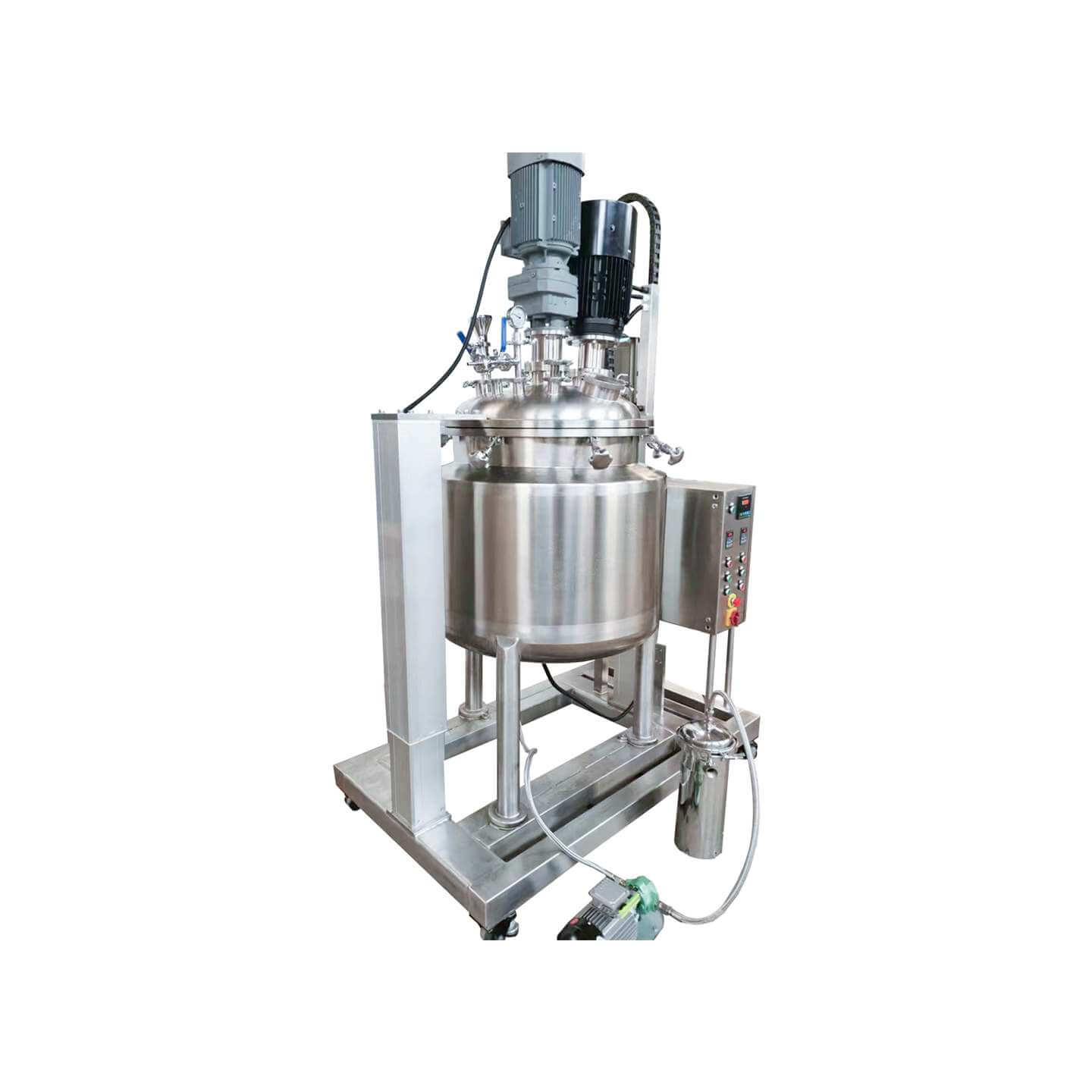

Laboratory Reactor
Laboratory reactor: used in the chemical industry, pesticide, paint, and other fields
Material
glass, stainless steel (316, 304), carbon steel, others
Capacity (L)
10-10000+
Mixing system
anchor, paddle, frame and others
Heating system
electric heating, oil heating and others
The laboratory reactor is small in size, beautiful in appearance, light, and fast in installation. It is composed of a pot body, pot cover, stirrer, jacket, support and transmission device, shaft sealing device, etc. The type of stirring device, rotation speed, sealing structure, heating method, etc. are produced.
Request a quoteLaboratory reactors can be designed according to the on-site environment and coordinated with the production process. It is the necessary production equipment in the traditional chemical industry.
RUNGYU produces an electric heating reactor, steam heating reactor, and heat-conducting oil heating reactor. According to the production process and operating conditions, the heating types of the laboratory reactor jacket are divided into electric heating rod heating, steam heating, and thermal oil heating. The shaft seal device is divided into a packing seal and a mechanical seal. Its mixing forms include anchor type, paddle type, worm gear type, push type, frame type, etc. The number of holes, specifications, materials, or other requirements can be designed and produced according to user requirements.

Notes on the installation of the laboratory reactor
1. Installation location of equipment: Laboratory reactor kettle should be installed in the explosion-proof operation room. When installing multiple laboratory reactor kettles, they should be separated and placed. Safe explosion walls should be used in the middle of each two. Safe passages and entrances outdoors should be provided in each operating room. When flammable and explosive substances are stored, good natural ventilation should be ensured for the machine and equipment.
2. After opening the package, check whether the laboratory reactor is damaged, install the equipment according to the machine and equipment model specifications, and find the accessories according to the packing list. If the heating method of the laboratory reactor is electric heating with high-temperature thermal oil, select the corresponding type and size of high-temperature thermal oil according to the operating temperature. When adding high-temperature heat transfer oil, open the oil filling port at the upper end of the jacket of the laboratory reactor. According to the oil filling port, fill the oil at the waiting position. Do not tighten the filling port to avoid pressure.
3. Installation and sealing of the cauldron body and cauldron cover: Use a sealing gasket or spherical surface to contact the arc surface of the cauldron body and cauldron cover, and tighten the main nut of the laboratory reactor kettle to clamp the two to each other to achieve a good sealing effect. When tightening the laboratory reactor nut, tighten it several times diagonally and symmetrically, and gradually tighten it with symmetrical force. The lid is not allowed to tilt to one side to achieve a good sealing effect. Before each installation, clean the left and right sealing surfaces with soft paper or cloth. If it can be operated effectively for more than 10,000 times, after the sealing surface is damaged, good sealing characteristics can be achieved through copying, processing, and repair. When disassembling the lid, the left and right sides of the lid should be extended slowly to avoid collision between the pot body and the middle sealing surface of the lid.
4. Gate valves, barometers, and valves are installed according to the twisting method of the front and rear nuts, that is, to achieve the actual sealing effect, the arc sealing surfaces connecting both sides cannot rotate relative to each other. Application of gate valve in laboratory reactor: The needle valve is wire-sealed. It only needs to rotate the needle valve slightly to achieve a tight seal to achieve excellent sealing characteristics. It is strictly forbidden to use excessive force to prevent the sealing surface from being damaged.
5. After the laboratory reactor is installed, pass in a certain amount of N2 for 30 minutes and check for leaks. If leakage is found, use soap foam to find the leakage point of the pipe and branch pipe, find the rear exhaust steam tightening, and then enter the N2 vulcanization experiment again to ensure that there is no leakage before everything starts to work normally.




